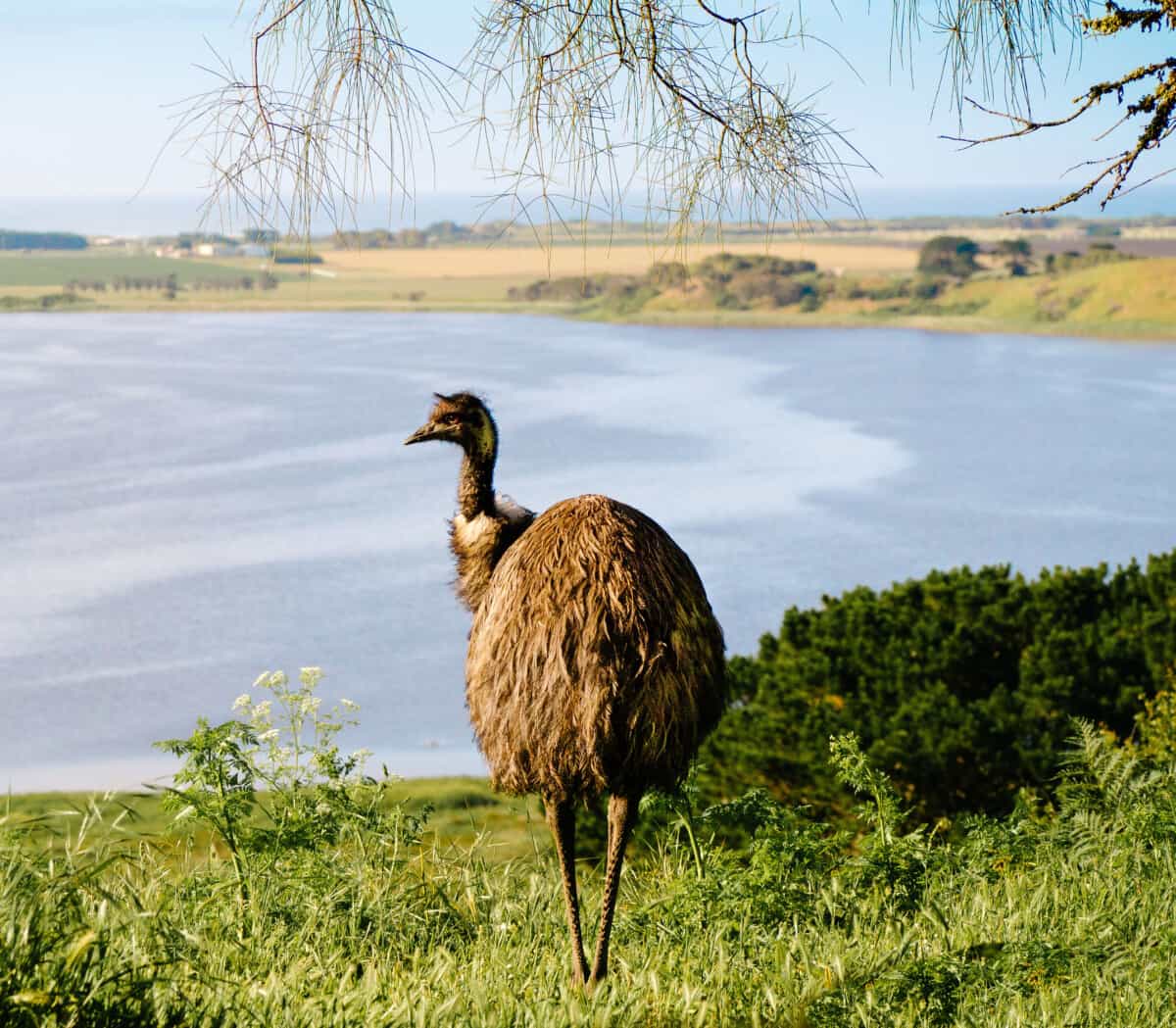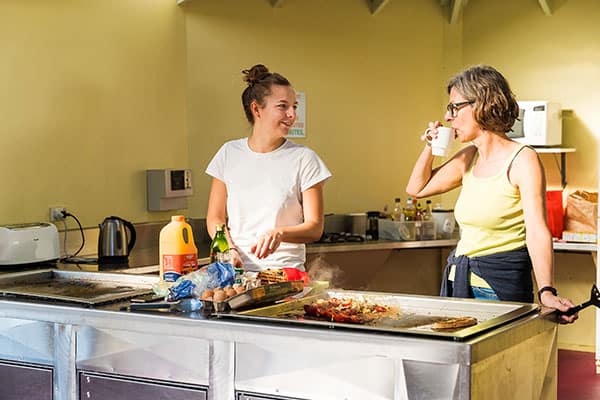There’s no more authentic way to connect with Australia’s rich indigenous culture than getting on Country and walking in the footsteps of the First Peoples. And Port Fairy is an ideal base for doing just that with not one, but two important indigenous culture sites within a short drive. Bonus points if you’re ticking off UNESCO World Heritage Sites on your must-do travel list.
It’s as easy as booking a few nights stay at a Gardens caravan park – there are several to choose from – then planning which site you’ll visit first. Both are on traditional lands of the Gunditjmara people and offer distinctive family-friendly visitor experiences in culture, geology and wildlife.
Worn Gundij at Tower Hill
Just 15 minutes drive east via the Princes Highway, Tower Hill is one of Victoria’s oldest inactive volcanoes. The striking crater landscape is home to a remarkable variety of wildlife, birdlife and native vegetation, now protected as the Tower Hill Wildlife Reserve. Expect to spy emus, koalas, black wallabies and more.
The Gunditjmara people lived here for thousands of years and continue as traditional owners today. Their oral stories, passed from generation to generation, tell of ancestors witnessing volcanic eruptions that blasted up through the earth thousands of years ago.
Learn more about the 65,000 year-old Aboriginal culture at the Worn Gundidj visitor information centre. On a two-hour interactive tour, led by an experienced cultural guide, you’ll unearth traditional indigenous lifestyles, get a taste for native food and medicine, and maybe take a shot at throwing a boomerang.
Head to towerhill.org.au for bookings and more info.
Budj Bim Cultural Landscape
You won’t regret taking the 45-minute drive northwest from Port Fairy, through beautiful farming country, to Budj Bim National Park. Here you’ll find Budj Bim Cultural Landscape, a UNESCO World Heritage Site recognised for its ‘Outstanding Universal Value’ – and sacred to the Gunditjmara people.
There’s truly no place like it in the world.
Budj Bim (also known as Mount Eccles) is a dormant volcano rising up beside three smaller overlapping volcanic craters. Huge lava flows connect Budj Bim to Kurtonitj (meaning ‘crossing place’) and Tyrendarra – cultural areas featuring traditional stone houses, stone aquaculture sites, eel smoking trees, seasonal wetlands and stone sculpture.
Tyrendarra is a traditional meeting place and camping area for the Gunditjmara people. The Tyrendarra fish trap complex is a fascinating demonstration of how they lived sustainably and farmed the natural environment here for many thousands of years. It’s recognised as the earliest living example of aquaculture in the world, dating back at least 6,000 years.
To truly connect to the wonder of Budj Bim, join an indigenous guided tour and allowing yourself to view the remarkable landscape through the lens of culture that’s literally as old as the hills.
Note: Tours are limited and some areas are closed to visitors, preparing for the planned opening of the new Budj Bim visitor centre in June 2022. The national park remains open with lots of wildlife and natural environment to explore. Check for tour availability and more info at budjbim.com.au
Understanding indigenous peoples’ deep connection to nature and environment is soul-filling for young and old. You’ll likely come away feeling surprised, motivated and keen to dive into nature yourself. Port Fairy’s ready for you with brilliant beaches, kilometres of nature walking trails and eatery menus brimming with hearty, fresh produce. Hang around, kick back and enjoy a few days downtime in a seaside village with much to discover.




